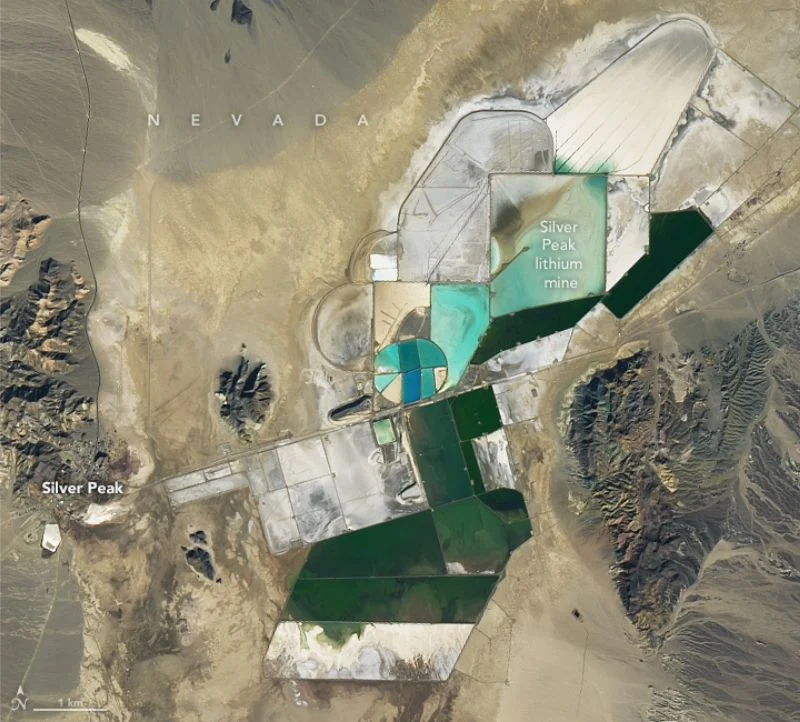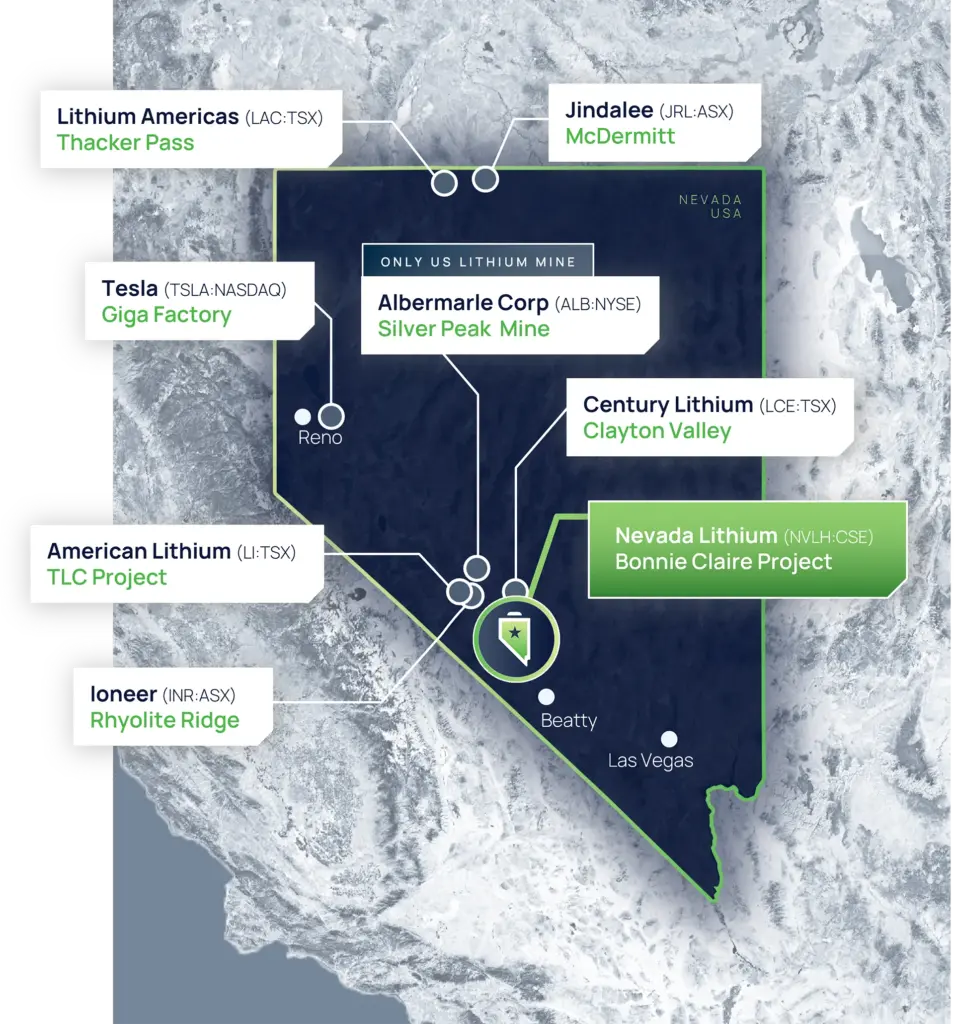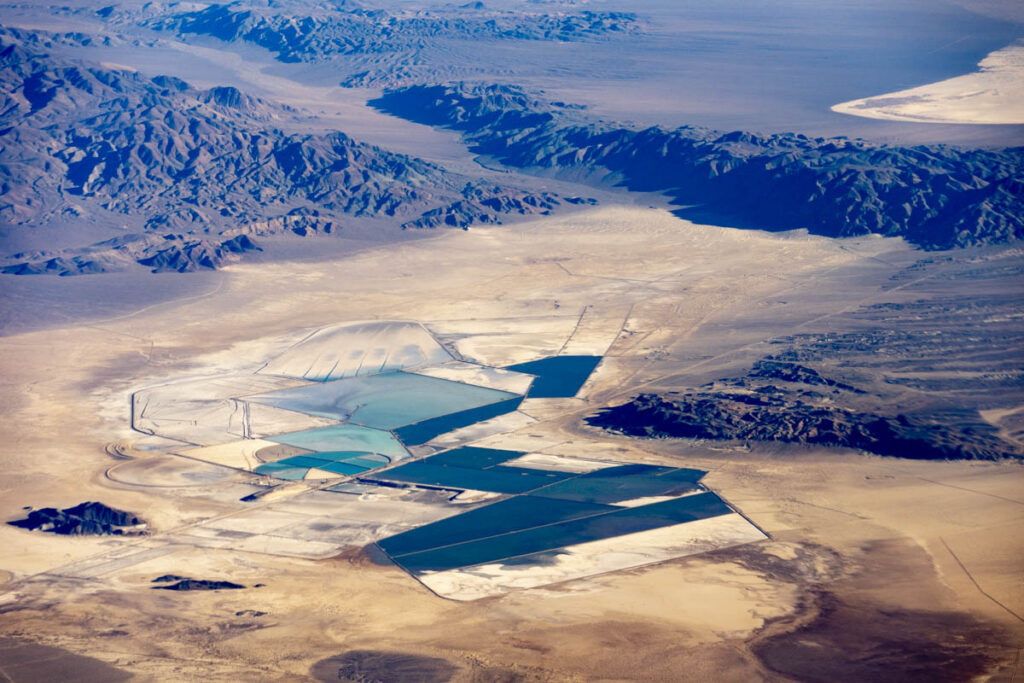
Nevada Just Struck ‘White Gold’: Nevada has recently made waves in the energy world with a groundbreaking discovery: vast deposits of lithium, often called “white gold.” This precious mineral could play a significant role in fueling America’s shift toward clean energy, especially with its growing importance in electric vehicle (EV) batteries and energy storage solutions. The discovery has the potential to reshape the state’s economy, spark a new mining boom, and help the United States secure a competitive edge in the global energy race. But with such major potential come significant challenges, including environmental concerns, land rights disputes, and the well-being of local communities. So, what’s really at stake here, and how does this discovery affect not only Nevada but the entire nation?
Nevada Just Struck ‘White Gold’
Nevada’s lithium discovery is both an opportunity and a challenge. As the state becomes a major player in the global lithium market, it’s essential to consider both the economic benefits and the environmental and cultural costs. The decisions made today will have lasting effects on the state’s landscape, economy, and communities for generations to come.
| Key Insights | Details |
|---|---|
| Discovery of Lithium | Nevada is home to some of the world’s largest lithium deposits, crucial for EV batteries. |
| Economic Impact | The state could become a central hub for lithium production, driving job growth and investment. |
| Environmental Concerns | Mining activities threaten local ecosystems, especially endangered species like Tiehm’s buckwheat. |
| Cultural and Land Rights Issues | There are disputes over mining on Native American lands and sacred sites. |
| Lithium Production Stats | Nevada’s Thacker Pass mine alone could produce 66,000 tons of lithium annually. |
| Government Involvement | The U.S. government has approved major lithium mining projects, despite some controversies. |
| Official Sources | Official Government Report on Lithium Mining |
What Is Lithium and Why Is It So Valuable?
Lithium is a soft, silvery-white metal that’s highly valued for its ability to store and release energy. It’s the primary ingredient in lithium-ion batteries, the power source for everything from smartphones and laptops to electric vehicles (EVs) and renewable energy storage systems.
In recent years, the world has witnessed a surge in demand for lithium as nations push for greener energy solutions. The United States, with its ambitious goals for reducing carbon emissions, is eyeing lithium as a critical component of its clean energy transition. The country’s growing demand for EVs and renewable energy systems has made lithium more valuable than ever—hence the term “white gold.”
Nevada, long known for its gold and silver mines, is now at the center of this new “gold rush.” The discovery of vast lithium deposits in the state has made it a potential global leader in lithium production.
Nevada Just Struck ‘White Gold’: A Game-Changer for the Nation
Nevada’s lithium discovery isn’t just a big deal for the state—it could be a game-changer for the entire nation. With more than 17,000 lithium mining claims filed across Nevada, it’s clear that the state has become a hotspot for companies seeking to tap into this precious resource.
One of the most notable projects is the Thacker Pass lithium mine in Humboldt County. This site is expected to be one of the largest lithium producers in the United States, with projections of producing up to 66,000 tons of lithium annually. This mine alone could supply up to 25% of the world’s lithium demand, making it a critical player in global markets.
The economic impact of these lithium deposits could be immense. Not only will lithium production boost Nevada’s economy, but it could also lead to thousands of new jobs, both in the mining sector and in the surrounding industries like logistics, technology, and manufacturing.
A History of Lithium Mining in Nevada
Nevada has a long history of resource extraction, particularly in gold and silver. But its potential for lithium mining is relatively new. As recently as the 2000s, lithium wasn’t a major focus for the state, even though the mineral was known to exist. It wasn’t until the 2010s, when demand for lithium-ion batteries skyrocketed, that the state’s potential as a lithium powerhouse was realized.
In 2018, a major discovery at the Thacker Pass site brought Nevada’s lithium deposits to global attention. Since then, several companies have rushed to develop the state’s lithium-rich lands. The Silver Peak lithium mine, which has been operational for over 50 years, is currently the only active lithium-producing site in the U.S. However, with Nevada’s growing interest in lithium extraction, this is likely to change, as new projects and technological advancements emerge.
Today, with several large-scale lithium projects in development, Nevada is poised to become the lithium capital of the United States—and possibly the world. This transformation marks a new chapter for the state’s mining industry.
The Global Demand for Lithium
The global demand for lithium has exploded in recent years, driven primarily by the rise of electric vehicles (EVs). According to a report from the International Energy Agency, EV sales have increased dramatically year-on-year, with projections suggesting that EVs could make up 60% of all car sales by 2040.
As the world shifts towards clean energy, lithium’s role as a key material for energy storage has never been more important. It’s no surprise, then, that countries around the world are seeking to secure stable supplies of this essential mineral. Nevada’s lithium discovery couldn’t come at a better time, positioning the U.S. to reduce its reliance on foreign lithium suppliers, especially China.
Furthermore, lithium plays a pivotal role in energy storage systems, essential for maintaining the flow of renewable energy such as solar and wind. With increased efforts to combat climate change, Nevada’s lithium will be crucial in helping the nation meet its sustainability goals.
Comparison to Other Lithium-Rich Regions
Nevada’s lithium reserves are indeed impressive, but how do they compare to other major lithium-rich regions?
The Atacama Desert in Chile and the Puna Plateau in Argentina are two of the world’s largest lithium-producing areas. Australia also plays a significant role in global lithium production. However, Nevada’s lithium reserves have one significant advantage: they are situated within the United States, which can reduce logistical issues and reliance on foreign mining operations.
With these strategic advantages, Nevada has the potential to not only meet domestic demand but also become a major supplier to international markets. The accessibility of Nevada’s reserves makes it a critical asset in ensuring energy security for the United States and reducing reliance on foreign imports.
Technological Innovations in Lithium Mining
One key to sustainable lithium production is technological innovation. Traditional lithium mining methods, like open-pit mining, are resource-intensive and often lead to environmental degradation. However, new technologies like Direct Lithium Extraction (DLE) are emerging as more environmentally friendly alternatives.
DLE technology allows lithium to be extracted directly from brine or clay using chemical processes that are less disruptive to the land. If scaled properly, DLE could become the future of lithium extraction, offering a way to meet demand while minimizing environmental impact.
In addition, other emerging technologies in the industry, such as closed-loop systems, aim to recycle lithium batteries and use more sustainable practices in the extraction process. These innovations are vital in ensuring that lithium mining can keep pace with the growing demand without further harming the environment.

Potential for Renewable Energy Integration
Nevada’s lithium discovery is not only about electric vehicles; it’s about integrating clean energy into every facet of American life. Lithium-ion batteries are used to store renewable energy, such as solar and wind power, which can be released during times when the sun isn’t shining or the wind isn’t blowing.
As Nevada ramps up its lithium production, it will play a crucial role in the larger transition to a green energy future. The ability to store renewable energy for later use could help mitigate the intermittency issues that have plagued renewable sources for years.
Nevada’s lithium could be the backbone of a sustainable energy system, where renewable power is stored and distributed efficiently. This integration of clean energy technologies with lithium resources aligns perfectly with the U.S. government’s clean energy goals.
The Controversies: Balancing Economic Growth and Environmental Protection
While the lithium discovery has sparked excitement, it hasn’t been without its controversies. Critics, particularly environmentalists, are concerned about the potential damage that lithium mining could cause to local ecosystems. The Thacker Pass mine, for example, is located in an area with endangered species and fragile ecosystems that could be disrupted by mining activities.
One specific point of concern is the impact on the Tiehm’s buckwheat flower, an endangered plant species that grows in the region. In fact, the U.S. government recently approved a controversial mining project at Rhyolite Ridge, which is home to this rare flower. Environmental groups are worried that mining activities will harm the flower and other sensitive habitats, leading to permanent ecological damage.
Moreover, local Native American tribes have raised concerns about mining projects disrupting their ancestral lands. These sacred sites are not just home to natural resources, but also to culturally significant locations that have been important for generations. The debate over land rights and the cultural impact of mining has added another layer of complexity to the issue.

A Deeper Dive: Understanding the Key Issues
To fully understand the implications of Nevada’s lithium discovery, let’s break it down into more digestible pieces.
1. The Economic Boom
Lithium mining in Nevada represents a huge economic opportunity. With global demand for electric vehicles and clean energy systems at an all-time high, the U.S. has an urgent need for domestic lithium sources. This discovery could reduce the nation’s reliance on foreign sources of lithium, especially from countries like China, which currently dominate global production.
2. Environmental Concerns
While the economic benefits are clear, the environmental costs are still under debate. Mining is a resource-intensive process, and lithium extraction can harm water supplies, soil, and biodiversity. The extraction methods used to mine lithium can also result in the release of toxic chemicals, which could endanger both wildlife and human populations.
3. Cultural and Land Rights Disputes
The cultural impact of lithium mining is another critical issue. Native American tribes, particularly those in Nevada, have expressed their concerns about the disruption to sacred lands and ancestral sites. There’s also the matter of land ownership, with many of the lithium-rich areas located on lands that are legally contested or traditionally owned by these tribes.
4. The Role of the Government
The U.S. government has taken a proactive approach to encouraging domestic lithium production, approving major mining projects in Nevada. However, these approvals have often been met with public protests from environmentalists and tribal groups. The government faces the challenge of balancing economic growth with environmental and cultural preservation.

Step-by-Step Guide: What You Need to Know About Nevada’s Lithium Mining Industry
To understand Nevada’s lithium mining industry, here’s a quick breakdown of key facts and what to keep an eye on as the situation develops:
Step 1: Understanding Lithium’s Role in Clean Energy
Lithium is at the heart of the clean energy transition. Electric vehicles (EVs) are expected to replace millions of gasoline-powered cars in the coming decades. These vehicles rely on lithium-ion batteries, which is why securing a stable domestic supply of lithium is crucial to meeting national goals for carbon reduction.
Step 2: Mining Practices in Nevada
Nevada’s lithium extraction process typically involves open-pit mining, where large areas of land are excavated to access the mineral-rich deposits beneath the surface. Once extracted, the lithium is processed into a concentrate, ready for use in battery production.
Step 3: The Economic Impacts
For Nevada, lithium mining represents a major source of revenue and job creation. In addition to direct jobs in mining, there will likely be job growth in sectors like transportation, logistics, and tech. The state could become the heart of America’s lithium economy.
Step 4: Environmental and Cultural Challenges
While the economic prospects are exciting, the environmental impact cannot be ignored. Both the state’s wildlife and the local Native American tribes face challenges due to mining activities. It’s important for policymakers to strike a balance between development and preservation.
Cybersecurity Startup Cloudsek Raises $19 Million Led by Tenacity Ventures and Commvault
US Markets Surge Overnight as Trump’s Surprise Tariff Delay Sends Shockwaves Through Asia
8 Proven Strategies to Stay Financially Afloat When Times Get Tough











